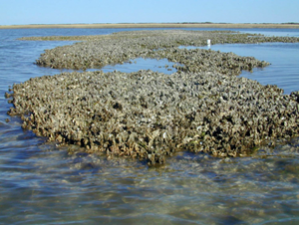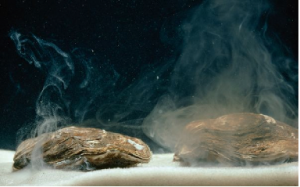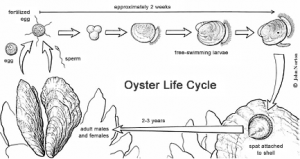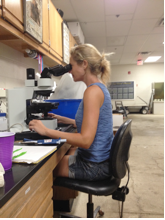Oysters 101
By Shannon Hood, Environmental Defense Fund
Today is National Oyster Day, and we’re celebrating the holiday with a post about these useful and tasty bivalves and the University of Maryland Center for Environmental Science’s (UMCES) Horn Point Laboratory, which is growing them by the billions.
Previous posts have discussed the ecological and economic importance of oysters, so we won’t spend time on this today. In preparation for a series of other posts on the (r)evolutionary oyster industry, this post will explain their life history and introduce some of the research being conducted to ensure their continued success.
Oysters grow in large colonies that make up reefs. Mature oysters begin to spawn when the water temperature reaches 74-86 degrees Fahrenheit. When the first male or female spawns, others sense it as they filter the water, thus triggering more to spawn.
The sperm and eggs join in the water column. The newly formed larvae will swim and feed for approximately two weeks until they reach what’s known as the pediveliger stage and are ready to attach to a substrate, a process known as “setting.” When an oyster sets, it secretes a glue-like substance and will not move from this location for the duration of its life. At this point, the oyster is known as a spat.
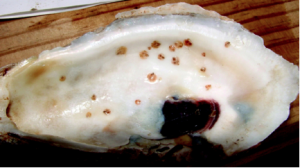
Oyster spat on their host shell. These oysters will spend the duration of their lives on this host shell.
In the lab, this process is much the same as in the wild, however, it takes place in a controlled environment. In this environment, staff are able to control variables such as temperature, salinity and food availability – variables which have tremendous effects on oyster spawning and survival rates.
Aside from their work in growing oysters, the UMCES Horn Point Hatchery is a hotspot for research on all things oyster, including numerous graduate student researchers looking into how salinity affects setting and growth throughout oysters’ lives. Having a good understanding of optimal salinities and answering these questions, we remove yet another unknown in this industry, allowing greater understanding for how to ensure oysters are able to thrive now and into the future.
Oyster populations and harvests are on the rise in the Chesapeake Bay for the first time in decades. In 2004, just 26,000 bushels were harvested from Maryland’s waters. In 2014, Chesapeake Bay harvesters reported their best year in three decades, bringing in 900,000 bushels from traditional on-bottom leases.
What’s the cause of this rebounding industry? It’s no miracle cure, but rather a host of federal and state management practices, a booming aquaculture industry, successful hatcheries that provide a reliable source of larvae and new science that is allowing these bivalves to thrive once again.
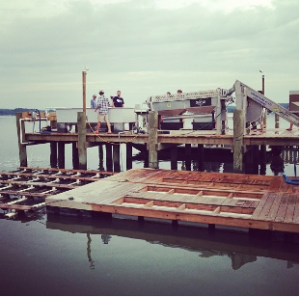
An oyster aquaculture farm in Maryland’s Chesapeake Bay. Photo courtesy of True Chesapeake Oyster Company.
What does this mean for Louisiana? Our coastal waters boast some of the best conditions for oyster growth in the nation. Using funds from the Natural Resources Damages Assessment (NRDA) Early Restoration Program, LSU Sea Grant is operating a new, state of the art hatchery on Grand Isle, a hatchery capable of producing up to one billion oyster larvae per year. This increased capacity can add significantly to the production potential of the state’s public and private oyster grounds. Additionally, off-bottom aquaculture and remote setting are looking more and more like realistic options to increase the industry’s success. Stay tuned for future posts about each of these new tools in the oyster industry’s toolbox.
